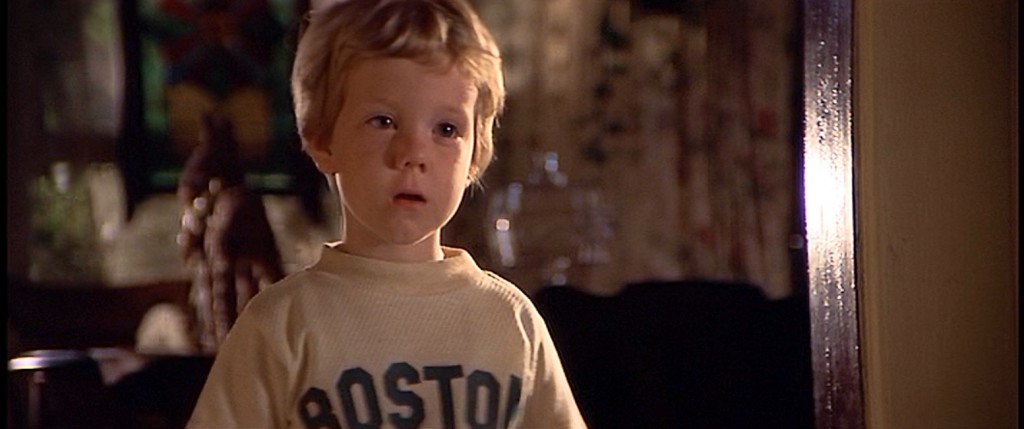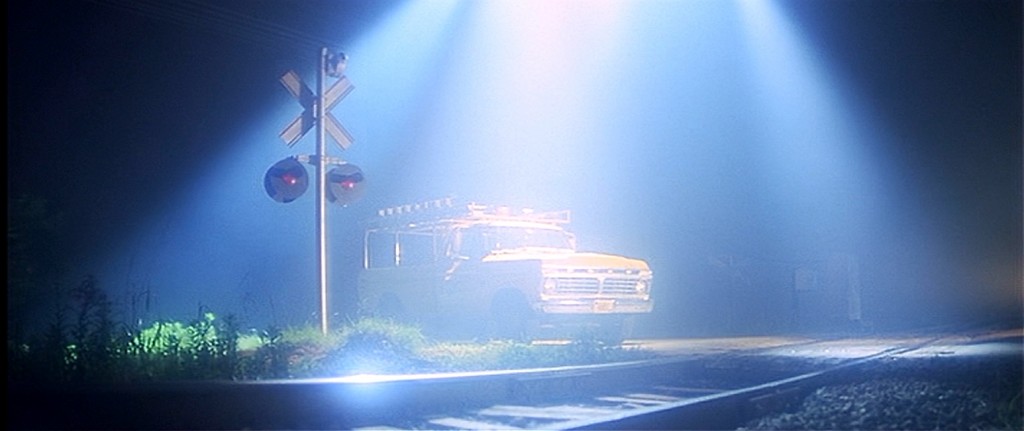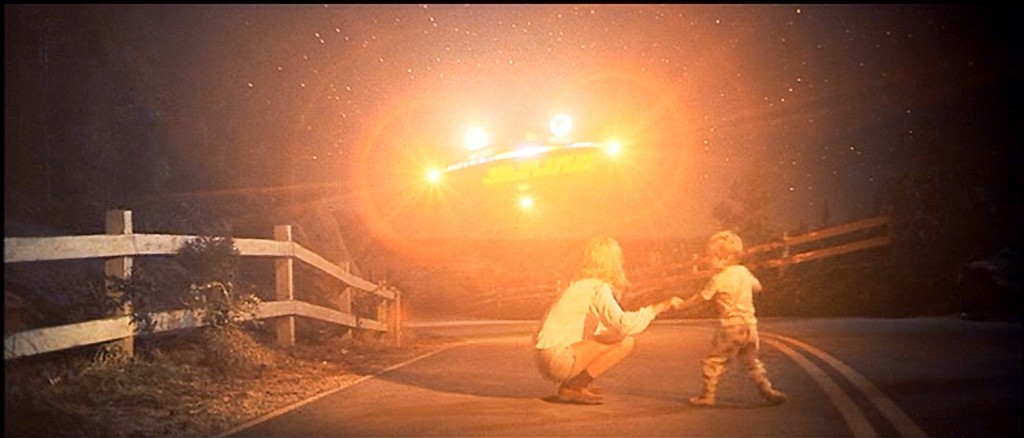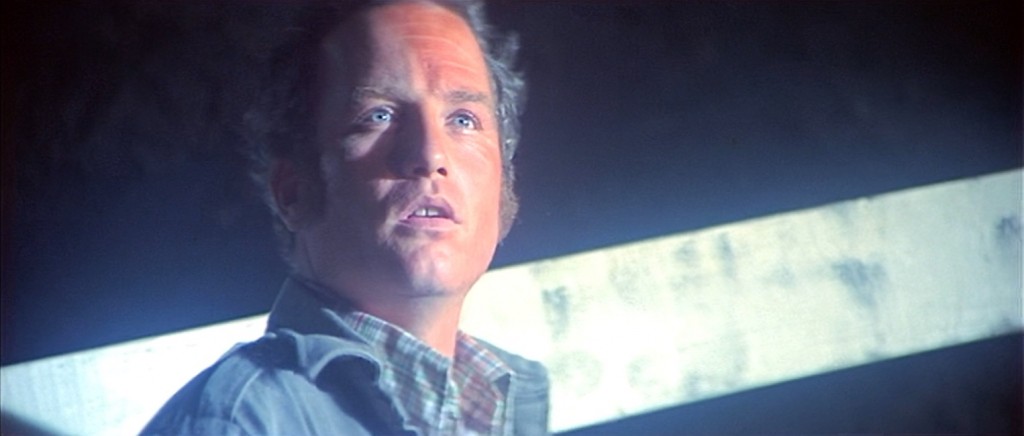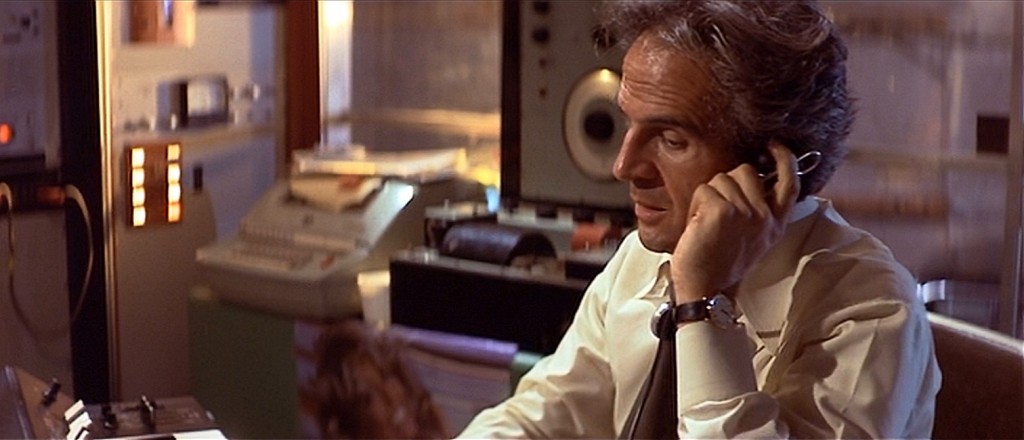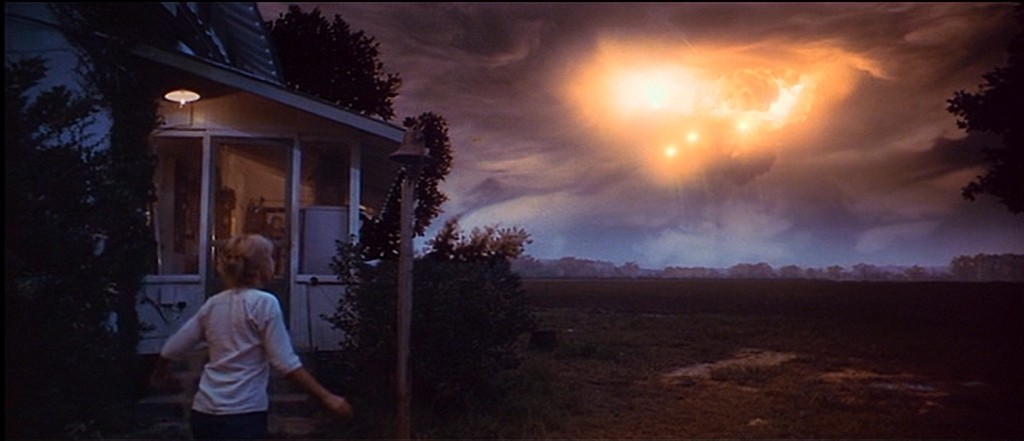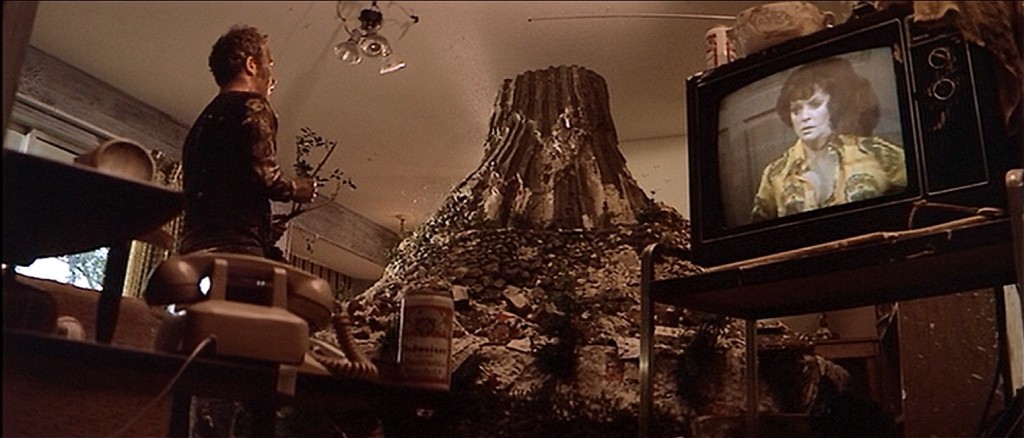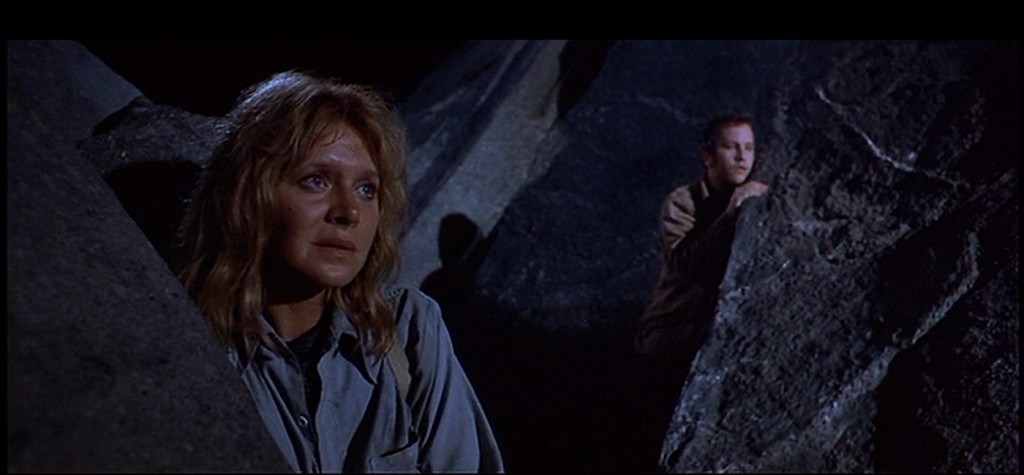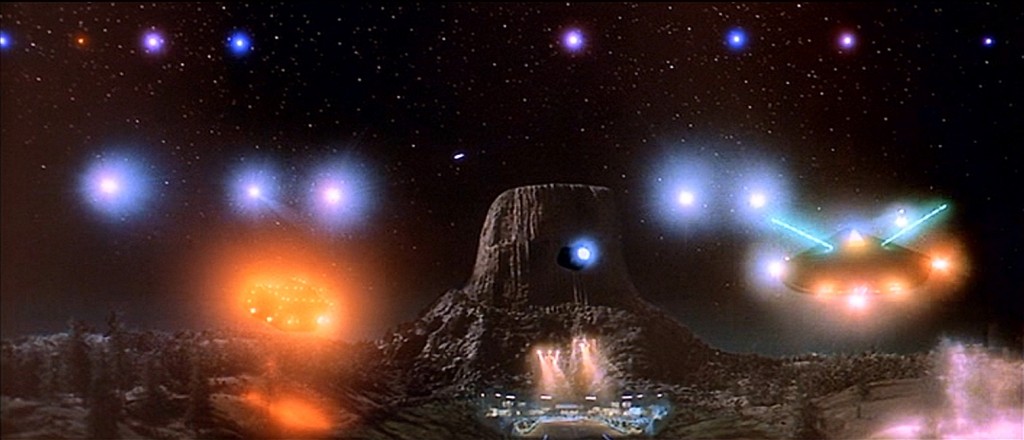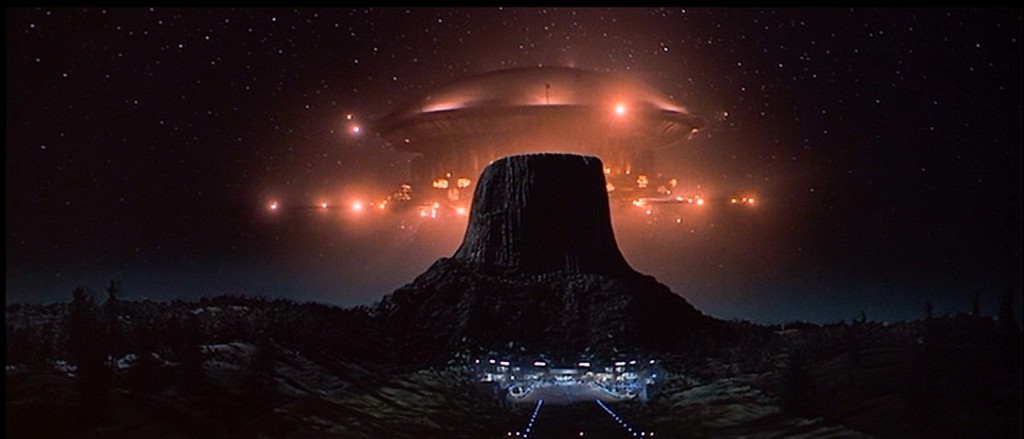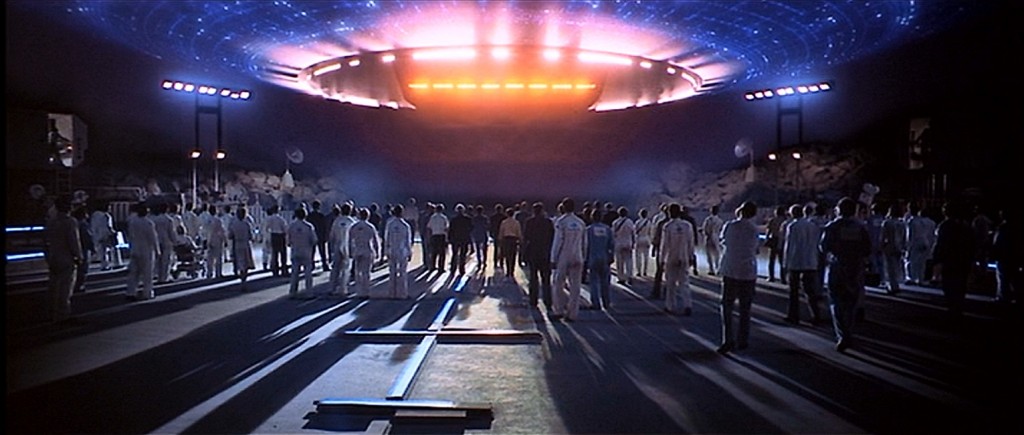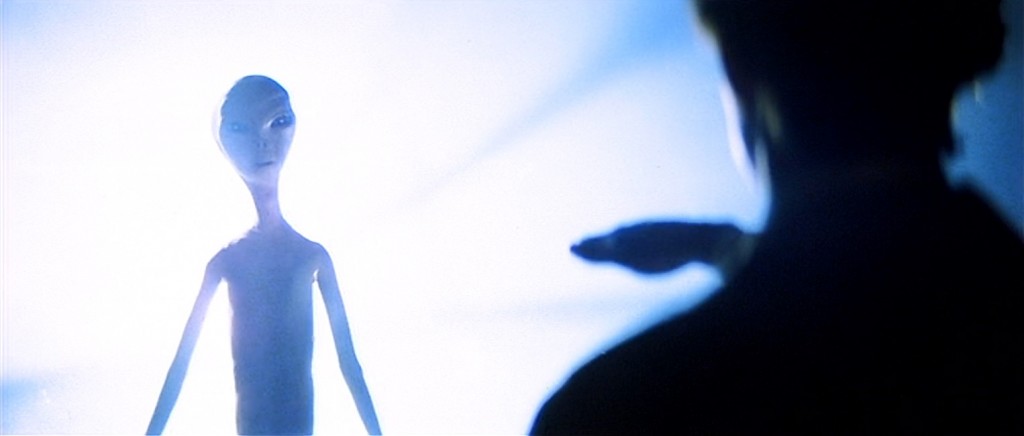Close Encounters of the Third Kind – 1977
This has long been one of my favorite science fiction films. There are so many films out there that depict aliens as evil or war-like. The films in which aliens are depicted as benign are not as easy to find. I can think of 1997’s Contact, 1982’s E.T. The Extra Terrestrial (another Spielberg film), or even 1984’s Starman. I know that there are plenty of others, but other movies like 1996’s Independence Day, 2002’s Signs, and even older films like War of the Worlds from 1953, and 1956’s Invasion of the Body Snatchers, portray other-worldly visitors as conquerors.
However, Stephen Spielberg had a different vision of life from outer space, and he took a fascinating approach to the subject. We have all heard any number of strange tales about unexplained disappearances throughout the world, fighter planes gone missing or ocean vessels lost at sea. Well, Close Encounters shows a few of those vehicles turning up in unlikely or even impossible places. They show no signs of age or ware, and their crews are conspicuously absent. French scientist Claude Lacombe, played by Francois Truffaut is sent to investigate, along with his interpreter, cartographer, David Laughlin, played by Bob Balaban.
Meanwhile, in Muncie, Indiana, Roy Neary, played by Richard Dreyfuss and Jillian Guiler, played by Melinda Dillon, each have frightening direct contact experiences with the aliens. Jillian’s son Barry is forcibly abducted in a wonderfully creepy scene in which the visitors assault them in their home for the sole purpose of taking the child. They alien’s motives are completely mysterious.
Now what is so fascinating about Spielberg’s story is that Roy, Jillian, and many other people are implanted with a psychic vision that they cannot explain. They become obsessed with UFOs and the image of a strange tower or mountain. In Roy and Jillian, the vision is so strong that it drives them insane.
I loved the way Dreyfuss played his part. His descent into madness is heart-wrenching as it destroys his life. He gets fired from his job and his wife leaves him. Roy, terrified by what is happening to him, is more than once brought to tears as his sanity disintegrates. But every time he sees anything that even vaguely resembles the shape of the mountain, he goes into an immediate trance and becomes fixated on whatever it is, whether it is a pile of shaving cream or a mound of mashed potatoes.
The visions drive Roy and Jillian to Devil’s Tower in Wyoming. I loved how the visions were like an invitation to a meeting in which the aliens planned to make formal contact with humans. And what a meeting! The final sequence of the film lasted about 35 minutes, and we are treated to fantastic flying ships, strange lights, menacing cloud formations, a gigantic city-sized mother ship, and three different kinds of strange white-bodied aliens.
And, of course, I would be remiss if I didn’t mention the music of John Williams, which was an integral part of the plot. That famous and iconic 5 note musical phrase is a staple of popular culture, synonymous with alien abductions. If you ask me, Williams is a genius and a master of his craft. He takes a little melody that, honestly doesn’t sound particularly melodic by itself, and he turns it into something that is amazingly melodic and even grand and lofty.
I’ve been trying to find any real flaws with the movie and am having trouble finding any. The special effects hold up perfectly well, even for a modern viewer. The story was so fascinating and well-written that whenever I watch the film, I get completely wrapped-up and engrossed in it. If you ask me, this is Spielberg at his finest.
I can never get over how perfect Dreyfuss and Dillon were for their parts, and how awesome they both were. I have watched the little documentary about the making of the movie which is included on the DVD. There are interviews with the cast and Spielberg, himself. I learned that, originally, Dillon didn’t want to take the part. She had no desire to do a science fiction film. Also, Teri Garr, who played Roy’s wife Ronnie, wanted to do the film, but wanted the part of Jillian. Fortunately Dillon accepted the part and was cast just two days before filming began.
Jillian’s son, Barry, a pivotal role in the film, was played by Cary Guffy. He was only 4 years old when the movie was filmed, and he was also interviewed for the documentary. Funny enough, he still has the same face. It is said that Spielberg is wonderful with children and employed wonderful tricks to get the young actor to give the proper reactions and desired facial expressions. He would have a man appear on the set in a clown costume or a gorilla suit when he wanted surprise or fear, or give Cary toys when he wanted delight. Guffy recounted it as a wonderful experience.
Obviously, this is one of my favorite science fiction movies and I’m sure I will watch it many more times in my life. It never gets old for me. It is always fresh and fascinating. It touches my imagination in all the right places. I am intrigued by both its light side and its darker nature. But now the movie is nearly 40 years old. So I’ve no doubt that there are a lot of people that have never seen it. Even people who are sci-fi fans! I say to them – go see it! You’ll be glad you did!
